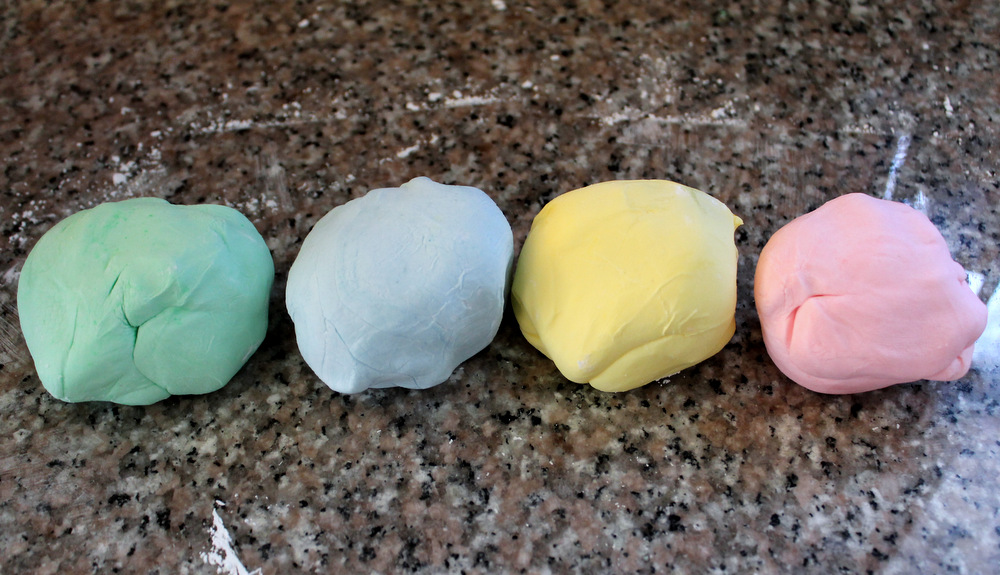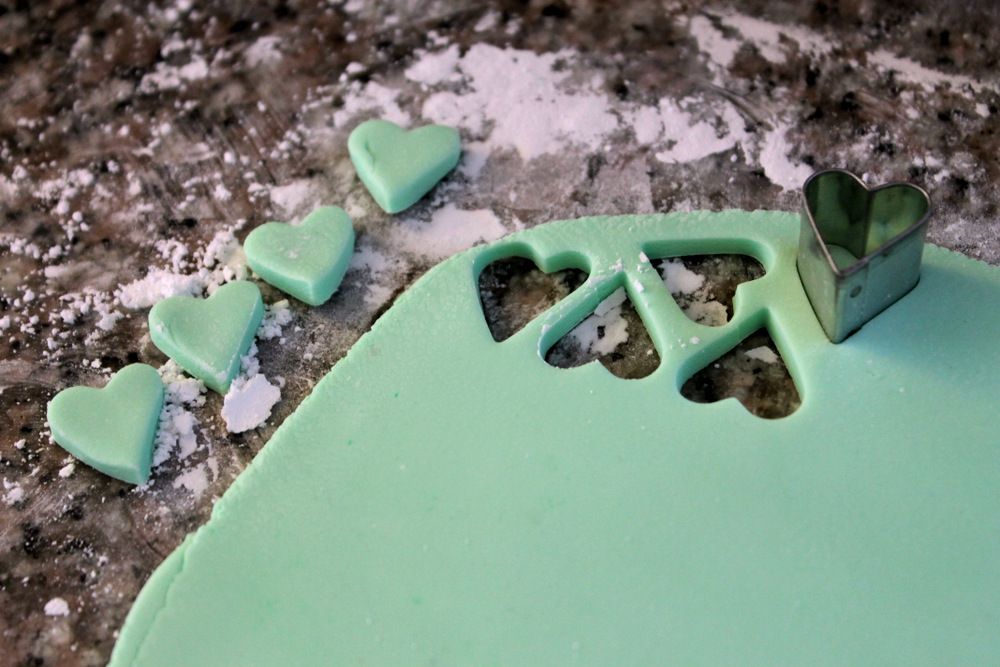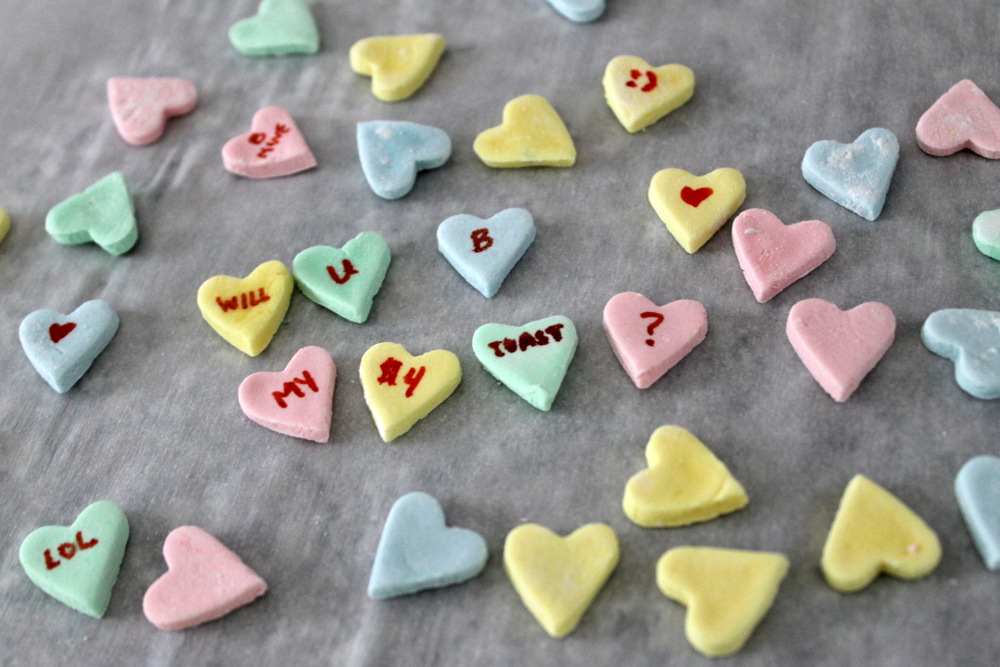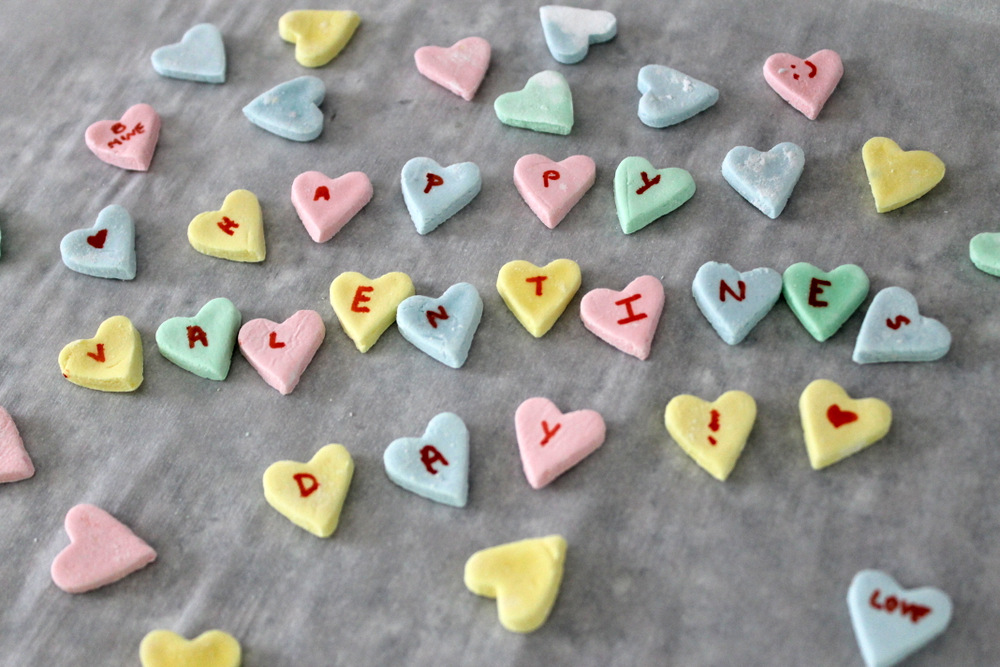
Like many kids, my favorite part of Valentine’s Day was the candy. A box of miniature heart-shaped chocolates was the ultimate prize, but I didn’t hold back from noshing on the copious lollipops, hard candies, and cookies that crossed my path on February 14. Inevitably, I ate my fair share of conversation hearts, those little chalky sugar bombs stamped with hilarious (to an 8-year-old) messages like “FAX ME,” “XOXO,” and “ASK ME.” I didn’t care that the candies were basically flavorless; a sugar high was the end goal.
These days, I’d likely only purchase a box of conversation hearts to hunt for modernized messages (“OK CUPID ME”?). A more flavorful way to satisfy any nostalgic cravings is to make them at home. The ingredient list is fairly simple—conversation hearts are, after all, mostly just sugar—and the flavoring, coloring, and decorating options are endless. Best of all for anyone with a family, the candy is very hard to screw up. It’s the perfect project for tackling with kids.

In addition to the sugar (I use confectioner’s), you’ll need unflavored gelatin, salt, food coloring, flavor extracts, and a bottle of soda. I used a bottle of fancy ginger ale to add a bit of spice to the candies, but you could use Sprite, sparkling cider, sparkling lemonade, or anything that strikes your fancy. Keep in mind that colored liquids will color the final candies, so try and stick to something clear or light-colored. You will also want to coordinate the extracts with the soda choice. I used lemon, peppermint, almond, and vanilla extracts; these all matched well to the ginger ale. The number of flavors used is entirely up to you.
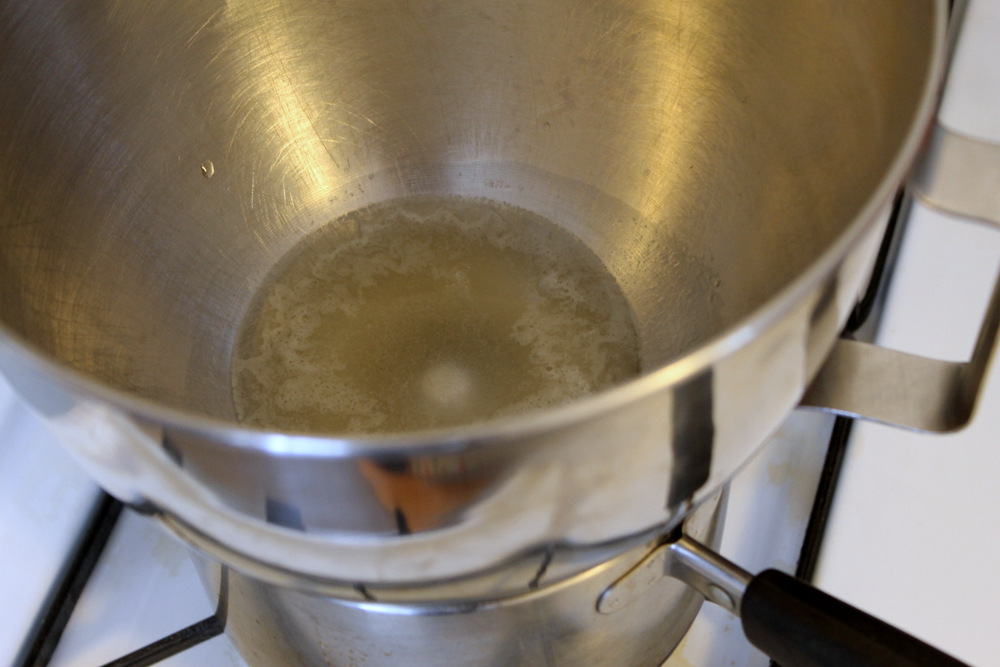
To get started, you will first need to “bloom,” or hydrate, the gelatin. First, mix the gelatin with the soda in the bowl of a stand mixer and let the mixture rest for about five minutes. Meanwhile, set up a double boiler by bringing a small pot of water to a simmer over medium heat. Once the water is steaming, place the mixer bowl on top of the water, making sure that the bottom of the bowl doesn’t touch the water. Stir the gelatin mixture occasionally until the granules are completely dissolved. Remove the mixer bowl from the pot of water and wipe the bottom to remove any condensation.
Now place the bowl in a stand mixer fitted with the paddle attachment. If you don’t have a stand mixer, you can use a hand mixer, but be prepared for a bit of an arm workout. Add 1 cup of confectioner’s sugar and beat until the sugar is combined. At this point, the mixture will be a thin, syrupy liquid.
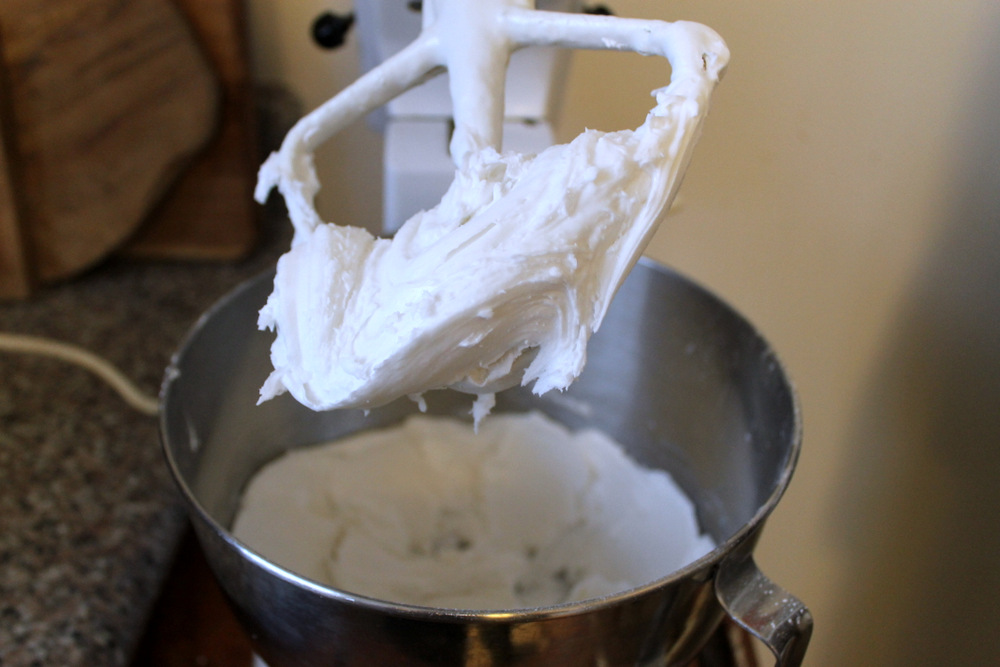
Continue to add the powdered sugar about 1 cup at a time, until the mixture turns into a thick, malleable dough. It shouldn’t be terribly sticky. You’ll probably have a little extra powdered sugar, which you will use for kneading and rolling out the dough. Transfer the dough to a countertop that has been lightly dusted with powdered sugar.
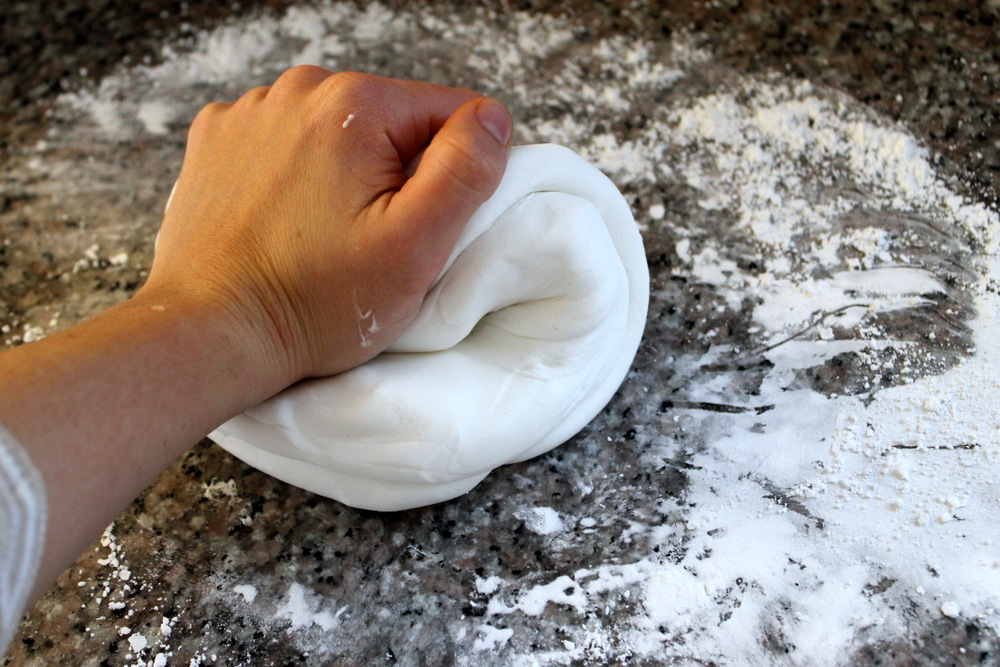
Knead the dough as you would bread until it is smooth and no longer sticky. At this point, it should have the same texture as Play-Doh. Divide the dough into however many portions you’d like. I made four different flavors of conversation hearts, so I divided the dough into four equal portions. Keep the dough portions covered with plastic wrap.

